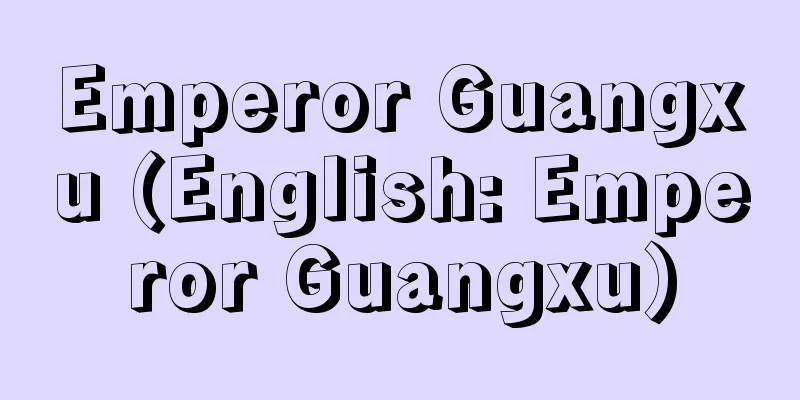Gutsherrschaft (English spelling) Gutsherrschaft German

|
A special form of feudalism that developed in eastern Germany east of the Elbe River from the 15th and 16th centuries onwards. It was characterized by the existence of vast feudal farms, their direct management by the feudal lord (Gutshelf), and the feudal lord's exclusive control over the village peasants. The feudal lords managed their own farms using the peasants' corvée labour and produced agricultural products for the market, but the feudal lord's control over the peasants was extremely strong and feudal, and although the peasants were given land, they could not leave the land without the lord's permission, had no freedom to choose a profession or marry, and their children were obligated to work for the lord as servants. On the other hand, the lords had an obligation to protect the peasants, but the peasants, who were hereditarily subordinate to the lords, did not have sufficient security of land tenure and were constantly at risk of land confiscation by the lords. This kind of lord-peasant relationship was realized and maintained by the lord's sole control of not only land lordship but also various other ruling/protective powers (judicial power, police power, the right to appoint village mayors, and the right to protect the church), and therefore the Gutsherrschaft, although small in scale, formed a complete domain of rule that could be called a "state within a state." From the 18th century onwards, as the state's policy of protecting the peasants placed restrictions on the lord's rule and capitalist agricultural management by agricultural laborers spread, the traditional lord-peasant relationship was forced to change. Then, with the legislation of peasant emancipation in the 19th century, the Gutsherrschaft began the process of disintegration. [Eihachiro Sakai] Source: Shogakukan Encyclopedia Nipponica About Encyclopedia Nipponica Information | Legend |
|
15、16世紀以降エルベ川以東の東部ドイツに発達した領主制の特殊形態。広大な領主農場の存在と領主(グーツヘル)によるその直接経営、村落農民に対する領主の排他的支配を特徴とする。領主は自己の農場を農民の賦役労働によって経営し、市場向けの農業生産を行ったが、農民に対する領主の支配はきわめて強固かつ封建的で、農民は土地を与えられてはいたが領主の許可なしには土地を離れられず、職業選択や結婚の自由もなく、またその子女は僕婢(ぼくひ)として領主のもとで働く義務を負っていた。反面、領主には農民を保護する義務があったが、世襲的に領主に隷属する農民は、その土地保有権にも十分な保障がなく、つねに領主による土地収奪の危険にさらされていた。このような領主―農民関係は、土地領主権のみならず、他のさまざまの支配=保護権(裁判権、警察権、また村長任命権や教会保護権)を領主が一手に掌握したことにより実現され、かつ維持されたものであり、したがってグーツヘルシャフトは、それ自体小規模ながら「国家内の国家」ともいうべき完結した支配領域を形づくっていた。18世紀以降、国家の農民保護政策が領主の支配に制限を加え、また農業労働者による資本主義的農業経営が広まるにつれて、旧来の領主―農民関係は変質を迫られる。そして19世紀の農民解放立法によって、グーツヘルシャフトは解体の過程に入るのである。 [坂井榮八郎] 出典 小学館 日本大百科全書(ニッポニカ)日本大百科全書(ニッポニカ)について 情報 | 凡例 |
<<: Kulp'ori ruins - Kuppori ruins (English spelling)
>>: Guppy - Guppy (English spelling)
Recommend
Tokaido Shinkansen
This high-speed standard-gauge line was built to a...
The Seven Wonders of Echigo
First, the Seven Wonders were set in remote areas...
Kingdom of Ararat
...A kingdom that flourished in Western Asia from...
Moriyo
The tomb of Emperor Wu of the Western Han Dynasty...
Nobuharu Baba
1513‐75 (Eisho 10‐Tensho 3) A military commander o...
Acetylcholinesterase
EC 3.1.1.7. Enzymes that cleave the ester bond of...
Anito - Anito
...The kitsunetsuki, yakotsutsuki, and osakitsuki...
Siege - Rojo
〘 noun 〙① To be surrounded by enemies and barricad...
Wimpy - Wimpy
...An orphan who lost his father at a young age, ...
Brewing
…There are foreign words that mean the brewing of...
Aguascalientes (English spelling)
The capital of Aguascalientes State in central Mex...
Rondalla
… [Ikebata Yukiura] [Music, Dance] In the center,...
Amati, N. (English spelling) AmatiN
...a family of violin makers active in Cremona, I...
stoicheion
... The English word "element," the Fre...
Hallelujah
…An interjection used in Christianity to express ...









